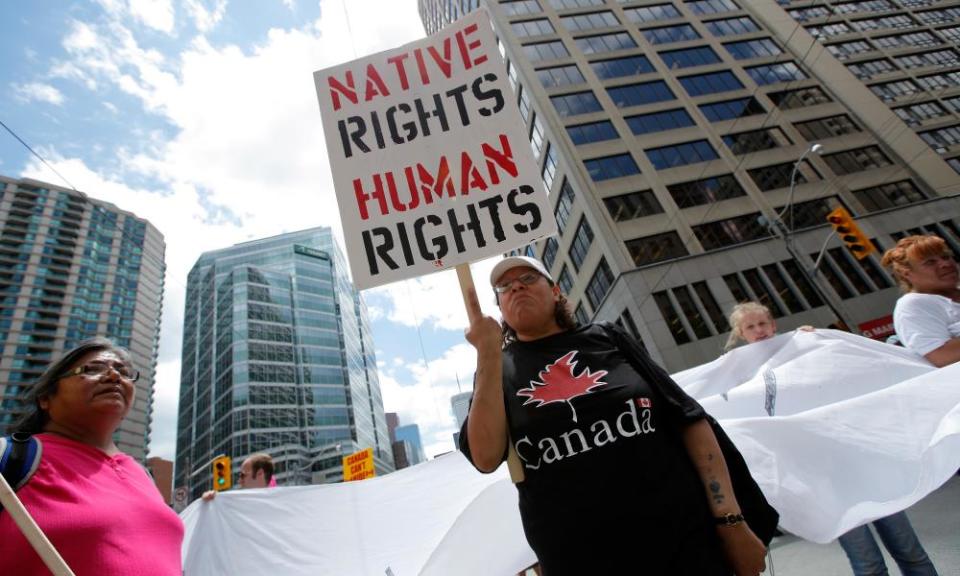Human rights groups call on Canada to end coerced sterilization of indigenous women

Human rights groups are calling on Canada to end the coerced sterilization of indigenous women, as a growing number of victims seek to join a class action lawsuit against government and medical professionals.
At least 60 women have joined a pending class action lawsuit against doctors and health officials in the province of Saskatchewan, seeking compensation for the violation of their rights.
The lawsuit has yet to be certified by a judge, but this week Amnesty International announced it will lobby the UN committee against torture to increase pressure on the Canadian government to act.
“Ultimately, this is about women who are supposed to have the right to make decisions about their bodies, having that right taken away from them,” said Amnesty’s Jacqueline Hansen.
The women allege their fallopian tubes were tied, burned or cut in public hospitals when the women were unable to give sufficient consent – which would be a breach of both medical ethics and the law.
Some of the complainants have said they were told they would not be allowed to see their newborn child unless they agreed to the procedure.
“These women and their communities have suffered. They have suffered. And they are entitled to restitution as they essentially re-live their trauma,” said Alisa Lombard, the lawyer representing the women.
The continued use of coerced sterilization was exposed 2015, when four women spoke about their experiences in the province of Saskatchewan. An investigation was launched and the province’s healthy authority issued an apology and new criteria for tubal ligations.
But the pending lawsuit suggests that some cases occurred as recently as 2017.
Senator Yvonne Boyer, an indigenous lawyer who co-authored an independent report on the experiences of women in Saskatchewan, believes the problem is likely more widespread than currently understood.
“If it’s happened in Saskatoon, it has happened in Regina, it’s happened in Winnipeg, it’s happened where there’s a high population of indigenous women,” Boyer told the Canadian Press. “I’ve had many women contact me from across the country and ask me for help.”
Jane Philpott, minister of indigenous services, described the practice as “horrifying” in an interview with the Canadian Press.
“The issue of forced sterilization of vulnerable people, including indigenous women, is a very serious violation of human rights,” she said.
Indigenous leaders have also expressed outrage: Perry Bellegarde, the national chief of the Assembly of First Nations, joined calls for an immediate investigation by the federal government.
“It is wrong, it is immoral, it is a gross violation of human rights, and this dehumanizing practice must stop,” he told the Canadian Press.
Hansen said that Amnesty had investigated similar practices in Mexico, Chile and Peru. “It’s always done for a very specific reason. It is clear that it’s been linked to policies around wanting to ensure a group of people doesn’t reproduce,” she said.
For Lombard, Canada’s troubled history with indigenous people lays bare the motivation behind the procedure.
“I think the genesis of this, and of treatment of people across the board, is really rooted in racism,” she said. “I think we have to call it what it is.”

 Yahoo News
Yahoo News 